 W
WAn endangered species is a species that is very likely to become extinct in the near future, either worldwide or in a particular political jurisdiction. Endangered species may be at risk due to factors such as habitat loss, poaching and invasive species. The International Union for Conservation of Nature (IUCN) Red List lists the global conservation status of many species, and various other agencies assess the status of species within particular areas. Many nations have laws that protect conservation-reliant species which, for example, forbid hunting, restrict land development, or create protected areas. Some endangered species are the target of extensive conservation efforts such as captive breeding and habitat restoration.
 W
WEndangered species as classified by the International Union for Conservation of Nature (IUCN), are species which have been categorized as very likely to become extinct in the near future. On the IUCN Red List, endangered is the second most severe conservation status for wild populations in the IUCN's schema after Critically endangered (CR). In 2012, the IUCN Red List featured 3,079 animal and 2,655 plant species as endangered (EN) worldwide. The figures for 1998 were 1,102 and 1,197 respectively.
 W
WA species of special concern is a protective legal designation assigned by the California Department of Fish and Wildlife (CDFW) to wildlife species that are at risk.
 W
WCITES is a multilateral treaty to protect endangered plants and animals. It was drafted as a result of a resolution adopted in 1963 at a meeting of members of the International Union for Conservation of Nature (IUCN). The convention was opened for signature in 1973 and CITES entered into force on 1 July 1975.
 W
WConservation-reliant species are animal or plant species that require continuing species-specific wildlife management intervention such as predator control, habitat management and parasite control to survive, even when a self-sustainable recovery in population is achieved.
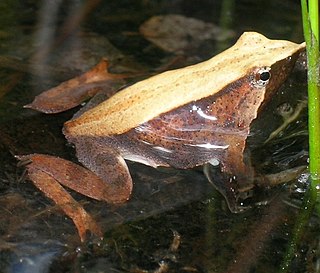 W
W, also called the southern Darwin's frog, is a rhinodermatid frog native to the forest streams of Chile and Argentina. It was first described by the French zoologist André Marie Constant Duméril and his assistant Gabriel Bibron in 1841, and is named after Charles Darwin, who had previously discovered it in Chile during his world voyage on HMS Beagle.
 W
WThe EDGE of Existence programme is a research and conservation initiative that focuses on species deemed to be the world’s most "Evolutionarily Distinct and Globally Endangered" (EDGE). Developed by the Zoological Society of London (ZSL), the programme aims to raise awareness of these species, implement targeted research and conservation actions to halt their decline, and to train in-country conservationists to protect them.
 W
WThere are three species of orangutan. The Bornean Orangutan, the most common, can be found in Kalimantan, Indonesia and Sarawak and Sabah in Malaysia. The Sumatran orangutan and the Tapanuli Orangutan are both only found in Sumatra, Indonesia The conservation status of all three of these species is critically endangered, according to the International Union for Conservation of Nature (IUCN) Red List.
 W
WThe Funds for Endangered Parrots (FbP) is a German non-governmental organisation (NGO) in the field of species conservation, which supports and operates projects worldwide for endangered parrot species.
 W
WA Habitat Conservation Plan (HCP) is a required part of an application for an Incidental Take Permit, a permit issued under the United States Endangered Species Act (ESA) to private entities undertaking projects that might result in the destruction of an endangered or threatened species. It is a planning document that ensures that the anticipated take of a listed species will be minimized or mitigated by conserving the habitat upon which the species depend, thereby contributing to the recovery of the species as a whole.
 W
WA hunting license is a regulatory or legal mechanism to control hunting.
 W
WAn incidental take permit is a permit issued under Section 10 of the United States Endangered Species Act (ESA) to private, non-federal entities undertaking otherwise lawful projects that might result in the take of an endangered or threatened species. Application for an incidental take permit is subject to certain requirements, including preparation by the permit applicant of a conservation plan.
 W
WThe Okapi Conservation Project (OCP) was founded in 1987 for the protection of the okapis and their habitat. Okapis are found only in the Democratic Republic of Congo and are seen as the major flagship species of the Ituri Forest. The OCP has about one hundred staff members and one hundred and ten government rangers under the direction of the Institute in Congo for the Conservation of Nature. The Okapi Conservation Project is partnered with the Wildlife Conservation Network. OCP's founder John Lukas is also a founding member of the Wildlife Conservation Network. In 1992 the project helped create the Okapi Wildlife Reserve, encompassing 13,700 square kilometers of the Ituri Forest, which was designated as a United Nations World Heritage Site in 1996.
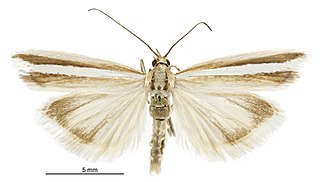 W
WOrocrambus fugitivellus is a moth in the family Crambidae. It is endemic to New Zealand. It is classified as critically endangered by the Department of Conservation.
 W
WPeoples Trust for Endangered Species (PTES) is a charitable organisation registered in England and Wales. It exists to promote the conservation of rare or declining species and habitats in the UK and worldwide through monitoring, public engagement, education, and through the funding of conservation projects and research. It also owns and manages two nature reserves. As of April 2015, PTES has 16 employees, five trustees and coordinates around 24,000 volunteers in the UK. PTES relies on donations from the general public and grants from trusts and foundations to continue its work - it receives no core funding from the UK Government. The organisation has registered charity number 274206.
 W
WPristimantis attenboroughi is a species of frogs endemic to the Peruvian Andes and has been recorded in and near the Pui–Pui Protection Forest. It is the first amphibian named after David Attenborough. It was discovered by Edgar Lehr and Rudolf von May during a period of two years of studying the forests of Peru. The species description was based on 34 specimens caught at elevations of 3,400–3,936 m (11,155–12,913 ft) above sea level.
ProSpecieRara, the "Schweizerische Stiftung für die kulturhistorische und genetische Vielfalt von Pflanzen und Tieren", is a non-profit charitable organization dedicated to the preservation of the genetic diversity of plants and animals in Switzerland. It was founded in 1982 in St. Gallen and is headquartered in Basel.
 W
WThe Saiga Conservation Alliance SCA is a network of researchers and conservationists working to study and protect the critically endangered Saiga Antelope and their habitat. The Saiga are often seen a major flagship species of the Central Asian and pre-Caspian steppes. In the last ten years, saiga populations have declined by 96%, which is the fastest decline ever recorded for a mammal species. Saiga Conservation Alliance is partnered with the Wildlife Conservation Network
 W
WThe Saola Working Group SWG is a working group of the IUCN Species Survival Commission's Asian Wild Cattle Specialist Group, created in 2006 to protect the saolas and their habitat. The Conservancy works to engage and incorporate local communities in protecting saolas in Annamite Range mountains on the border of Laos and Vietnam. The Saola is one of the most endangered species in the world. Discovered in 1992 it was the first large mammal new to science in more than 50 years and has never been seen by a biologist in the wild. The Saola Working Group is a coalition that includes about 40 experts from the forestry departments of Laos and Vietnam, Vietnam's Institute of Ecology and Biological Resources, Vinh University, biologists and conservationists from Wildlife Conservation Society and the World Wildlife Fund.
 W
WShooting, shoveling, and shutting up, also known as the 3-S treatment, refers to a method for dealing with unwanted or unwelcome animals primarily in rural areas. There have been reports of the frequently illegal triple-step procedure being used to dispatch mischievous pets, endangered species, and even sick livestock. Individuals often engage in this practice as a means to protect property or pets from predatory species that are protected by law, especially if other measures to protect their animals are unfeasible. For instance, eagles, a protected species, have been known to occasionally attack and kill young livestock on ranches. Similarly, there have been multiple incidents where hawks have attacked and killed small farm poultry and pets. Farmers and pet owners caught killing such animals have been prosecuted, regardless of their reasons for doing so.
 W
WSierra Club v. Babbitt, 15 F. Supp. 2d 1274, is a United States District Court for the Southern District of Alabama case in which the Sierra Club and several other environmental organizations and private citizens challenged the United States Fish and Wildlife Service (FWS). Plaintiffs filed action seeking declaratory injunctive relief regarding two incidental take permits (ITPs) issued by the FWS for the construction of two isolated high-density housing complexes in habitat of the endangered Alabama beach mouse. The District Court ruled that the FWS must reconsider its decision to allow high-density development on the Alabama coastline that might harm the endangered Alabama beach mouse. The District Court found that the FWS violated both the Endangered Species Act (ESA) and the National Environmental Policy Act (NEPA) by permitting construction on the dwindling beach mouse habitat.
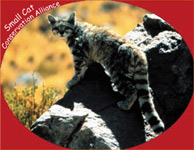 W
WThe Small Cat Conservation Alliance (SCCA) was founded in 1996, to address the conservation needs of small wild cats and their habitat worldwide. Small Cat Conservation Alliance seeks out local scientists and volunteers that are working to protect small cats in remote regions worldwide. They collect data that can be used to seek endangered species classification. SCCA operates in Kalimantan (Borneo), Sumatra, Chile, and China; and works with partners in Argentina, Bolivia, Brazil, Cambodia, India, Sarawak, Suriname and Vietnam. The Small Cat Conservation is also partnered with the Wildlife Conservation Network.
 W
WThe Snow Leopard Trust is the largest and oldest organization working solely to protect the endangered snow leopard and its habitat in 12 countries of Central Asia. The trust is a non-profit organization with its headquarters in Seattle, Washington. The present total population of snow leopards in the wild is estimated at between 3,920 and 6,390.
 W
WThe Spectacled Bear Conservation Society - Peru (SBC) is a team of researchers and conservationists working to study and protect the endangered spectacled bear, also known as the Andean bear. Spectacled bears are the only surviving species of bear native to South America, and the only surviving member of the subfamily Tremarctinae, the short-faced bears. Their range is the Andean Mountains from Venezuela to Chile.
 W
WThe Wild Animal Sanctuary is a 789-acre (319 ha) animal sanctuary in Keenesburg, Colorado, United States. This sanctuary specializes in rescuing and caring for large predators which are being ill-treated, for which their owners can no longer care, or which might otherwise be euthanized. It is a 501(c)(3) nonprofit organization and a state and federally licensed zoological facility.
 W
WThe World's 25 Most Endangered Primates is a list of highly endangered primate species selected and published by the International Union for Conservation of Nature Species Survival Commission Primate Specialist Group, the International Primatological Society (IPS), and Conservation International (CI). The 2012–2014 list added the Bristol Conservation and Science Foundation (BCSF) to the list of publishers. The IUCN/SSC PSG worked with CI to start the list in 2000, but in 2002, during the 19th Congress of the International Primatological Society, primatologists reviewed and debated the list, resulting in the 2002–2004 revision and the endorsement of the IPS. The publication has since been a joint project between the three conservation organizations and has been revised every two years following the biannual Congress of the IPS. Starting with the 2004–2006 report, the title changed to "Primates in Peril: The World's 25 Most Endangered Primates". That same year, the list began to provide information about each species, including their conservation status and the threats they face in the wild. The species text is written in collaboration with experts from the field, with 60 people contributing to the 2006–2008 report and 85 people contributing to the 2008–2010 report. The 2004–2006 and 2006–2008 reports were published in the IUCN/SSC PSG journal Primate Conservation, while the 2008–2010 and 2010-2012 report were published as independent publications by all three contributing organizations.
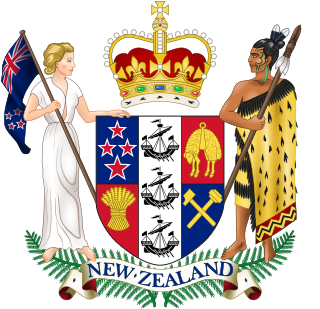 W
WThe Trade in Endangered Species Act is an Act of Parliament that was passed in New Zealand in 1989. It is administered by the Department of Conservation.
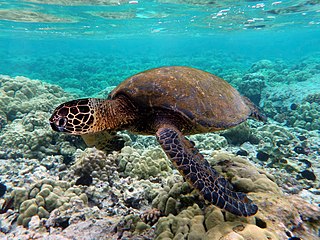 W
WThe green sea turtle, also known as the green turtle, black (sea) turtle or Pacific green turtle, is a species of large sea turtle of the family Cheloniidae. It is the only species in the genus Chelonia. Its range extends throughout tropical and subtropical seas around the world, with two distinct populations in the Atlantic and Pacific Oceans, but it is also found in the Indian Ocean. The common name refers to the usually green fat found beneath its carapace, not to the color of its carapace, which is olive to black.
 W
WThe Ugly Animal Preservation Society is a comedy night with a conservation twist founded in Great Britain by biologist, writer and TV presenter Simon Watt to raise the profile of animal species which lack traditional aesthetically appealing characteristics. In part it is based on the belief that conservation of charismatic megafauna like pandas attract disproportionate amounts of funding that could be better spent elsewhere. The organisation aims to protect less attractive animals such as the proboscis monkey which also face threats.
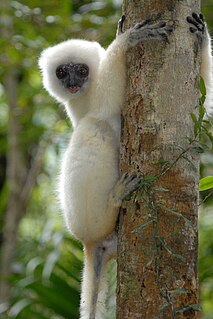 W
WThe World's 100 most threatened species is a compilation of the most threatened animals, plants, and fungi in the world. It was the result of a collaboration between over 8,000 scientists from the International Union for Conservation of Nature Species Survival Commission, along with the Zoological Society of London. The report was published by the Zoological Society of London in 2012 as the book, Priceless or Worthless?